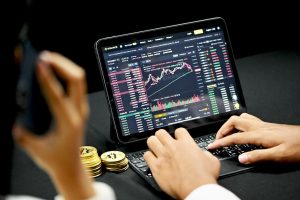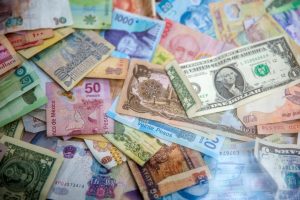Forex, or the foreign exchange market, is the largest financial market in the world. It’s a decentralized market where currencies from all over the world are bought and sold. The forex market operates 24/7 and has a daily trading volume of over $5 trillion.
If you’re new to forex, the idea of trading currencies may seem overwhelming. However, with a bit of understanding and knowledge, you can start trading forex as a beginner. Here’s what you need to know to get started.
Understanding Forex
Forex trading involves buying and selling currencies. The forex market is divided into pairs, where one currency is traded against another. For example, the EUR/USD pair represents the euro and the US dollar.
The forex market is influenced by several factors, including economic news, political events, and market sentiments. The price of a currency pair is determined by the demand and supply of the currencies in the market.
Forex trading involves making speculative trades, where you predict the movement of a currency pair. You can either buy or sell a currency pair, depending on whether you think its value will increase or decrease.
Forex Trading Platform
To start trading forex, you need a forex trading platform. A trading platform is software that allows you to access the forex market and place trades. Several trading platforms are available, including MetaTrader 4 and 5, cTrader, and TradingView.
When choosing a trading platform, consider factors such as ease of use, reliability, and features. Most trading platforms offer a demo account, which allows you to practice trading with virtual money before risking your real money.
Forex Trading Strategies
Several trading strategies are used in forex trading. The most popular strategies include:
1. Technical Analysis – involves analyzing past price movements and using charts and indicators to predict future price movements.
2. Fundamental Analysis – involves analyzing economic news and events to predict the movement of currency pairs.
3. Sentiment Analysis – involves analyzing market sentiments and trader behavior to predict market trends.
4. Price Action Trading – involves analyzing price movements and using patterns to predict future price movements.
Risk Management
Forex trading involves risks, and it’s essential to manage your risks to avoid losing money. Some risk management techniques include:
1. Stop-Loss Orders – these are orders placed to automatically close a trade when the price reaches a predetermined level, minimizing losses.
2. Position Sizing – involves determining the amount of money to risk on a trade, based on your account size and risk tolerance.
3. Risk-Reward Ratio – involves determining the potential profit and loss of a trade before placing it, and ensuring that the potential profit is more than the potential loss.
4. Diversification – involves spreading your investments across different currencies and markets to minimize risk.
Conclusion
Forex trading can be a profitable venture if done correctly. However, it’s crucial to understand the market and the risks involved before diving in. With a bit of knowledge and practice, you can start trading forex as a beginner and work your way up to becoming a successful trader.






